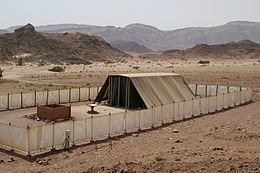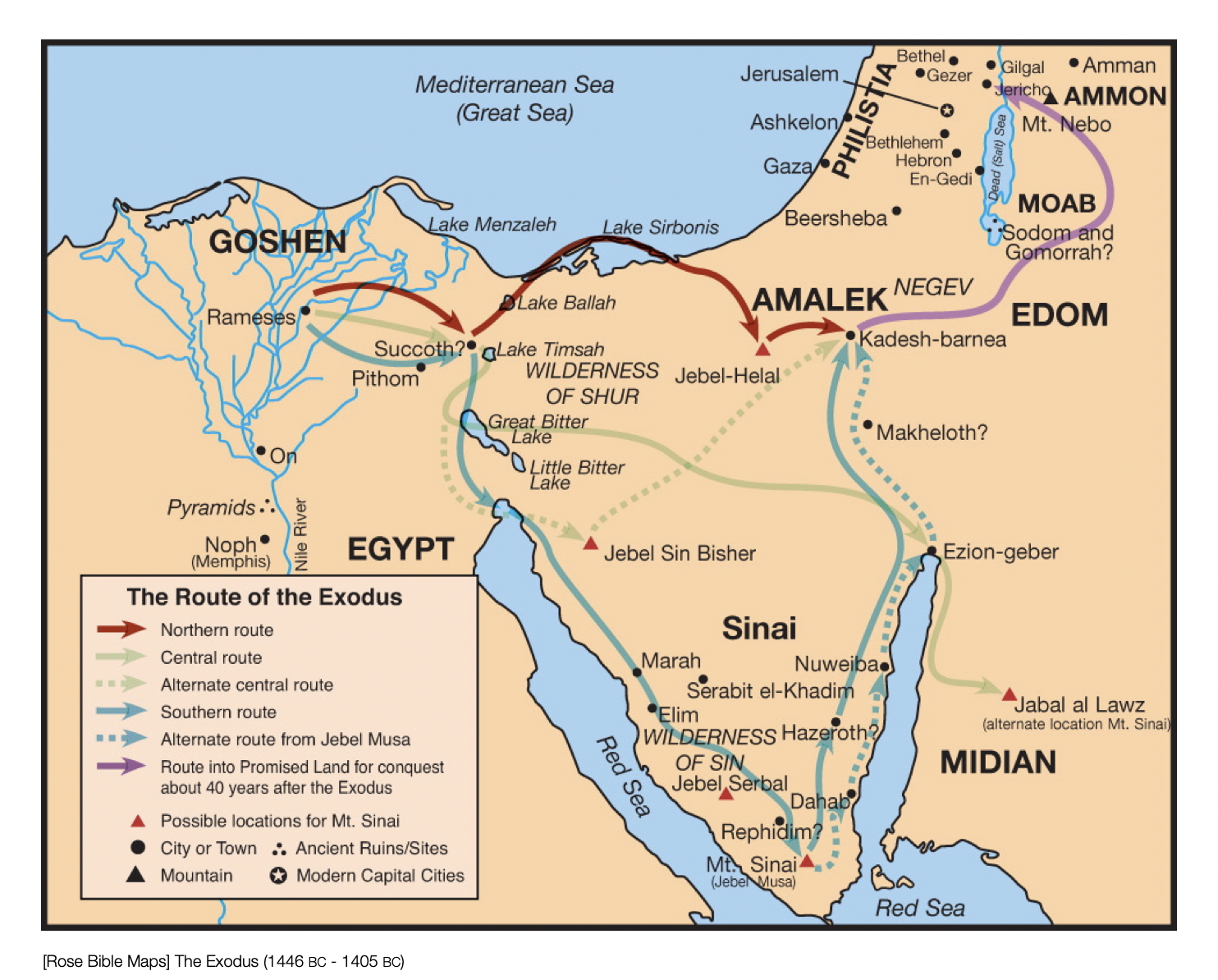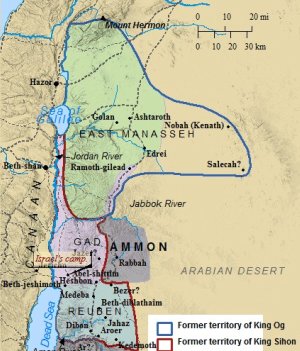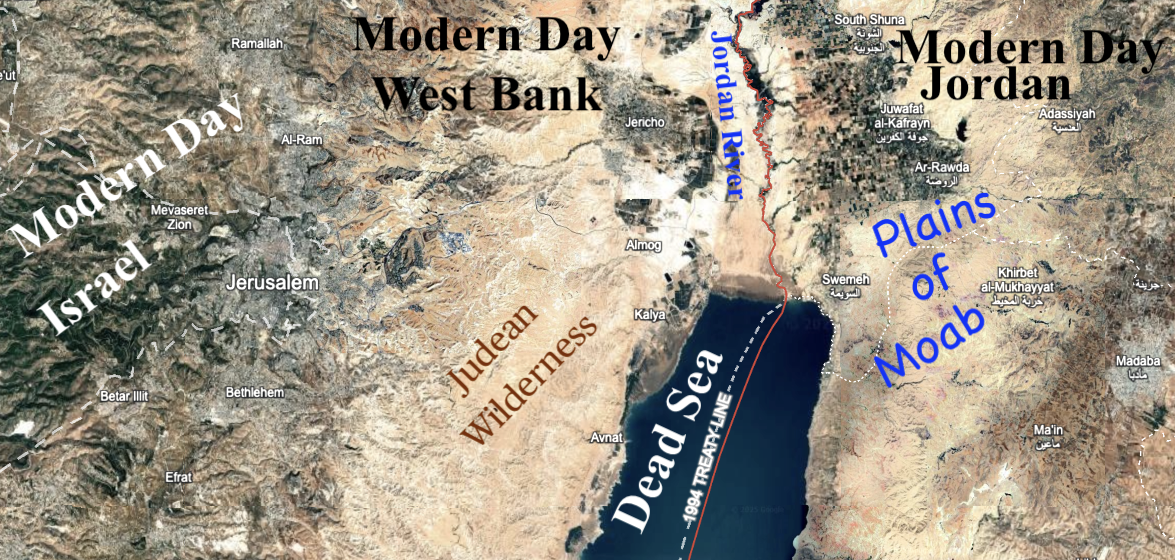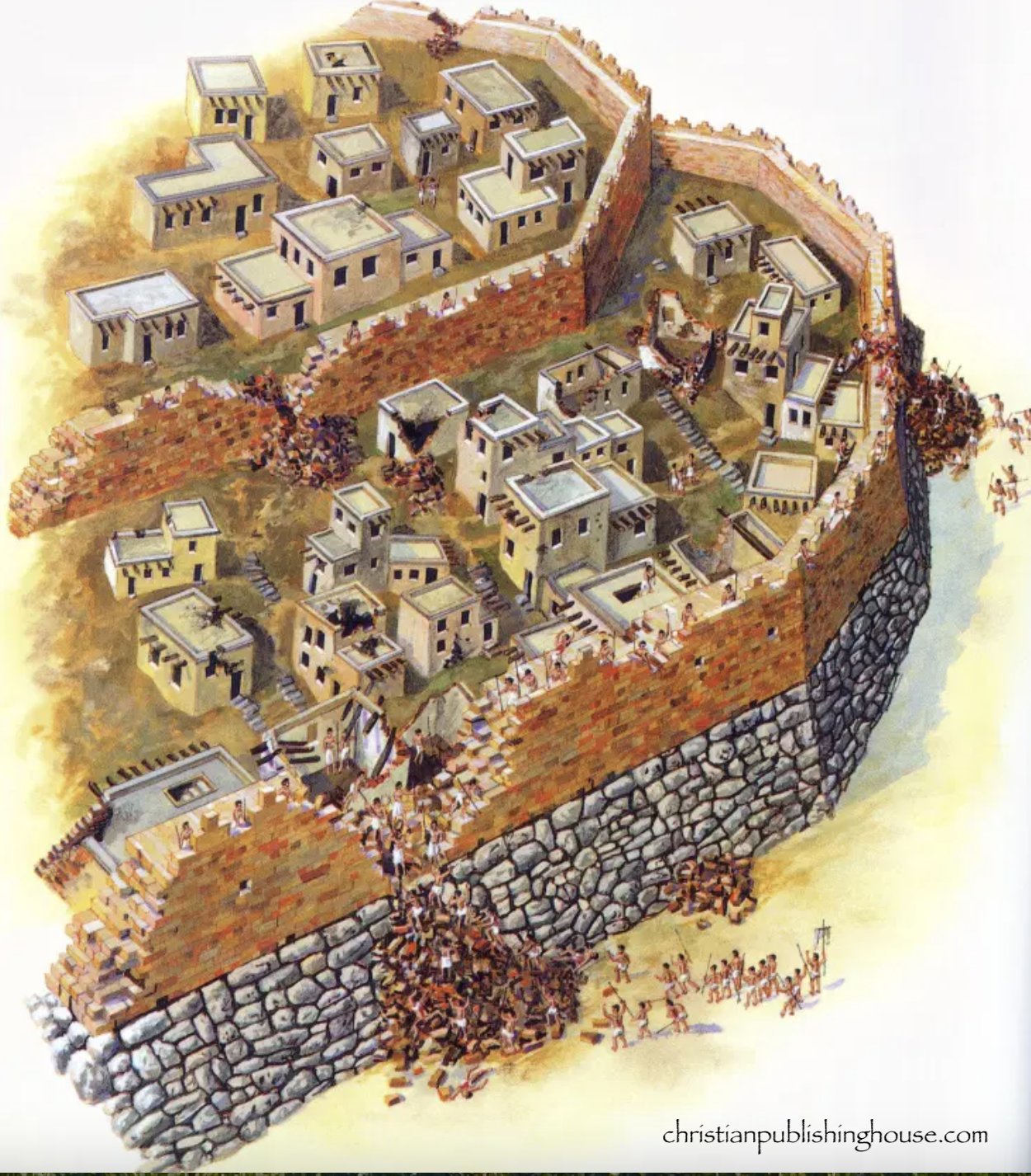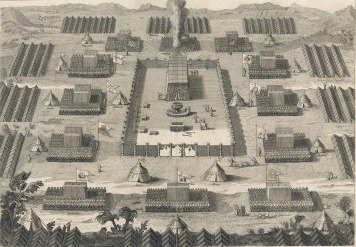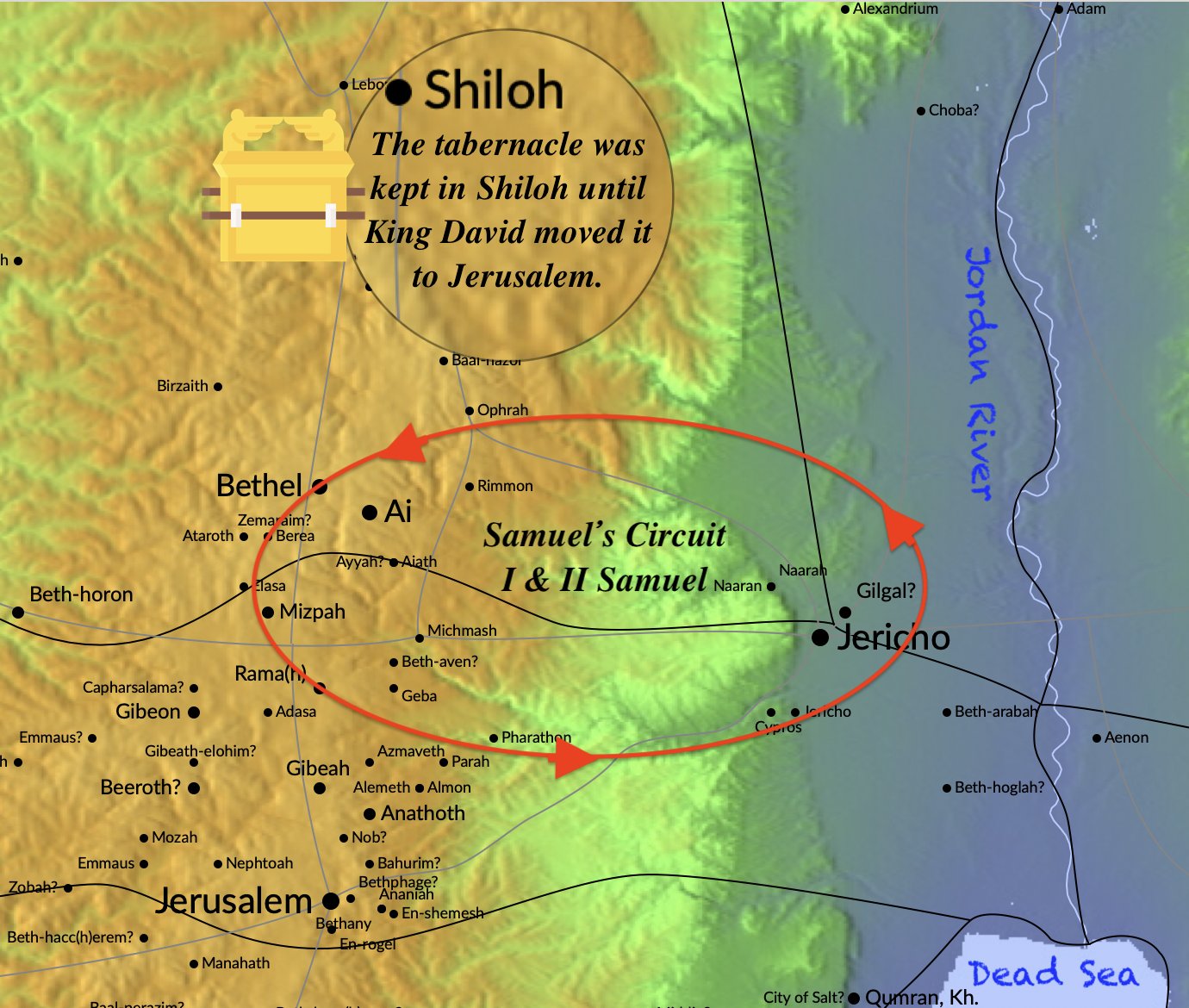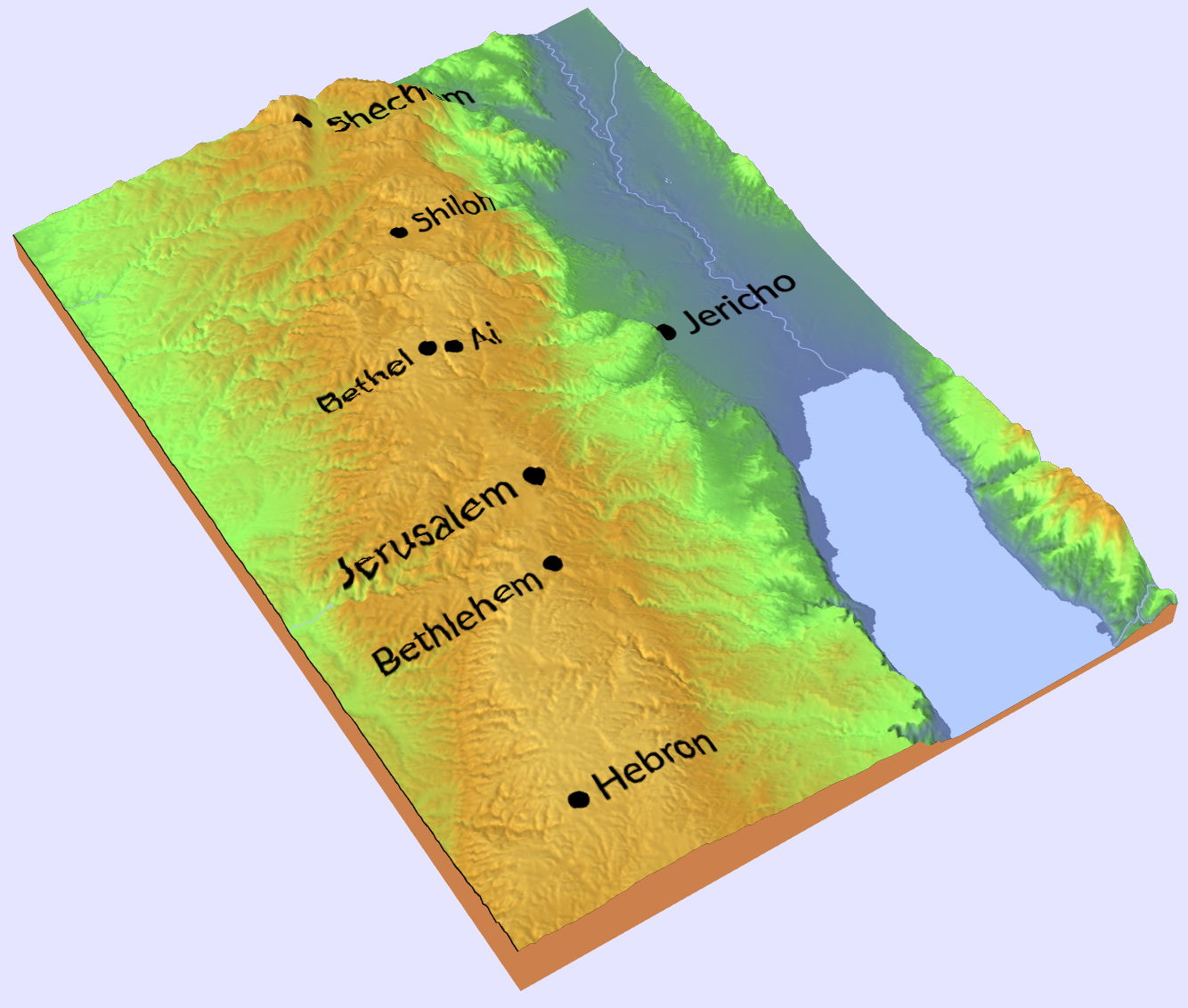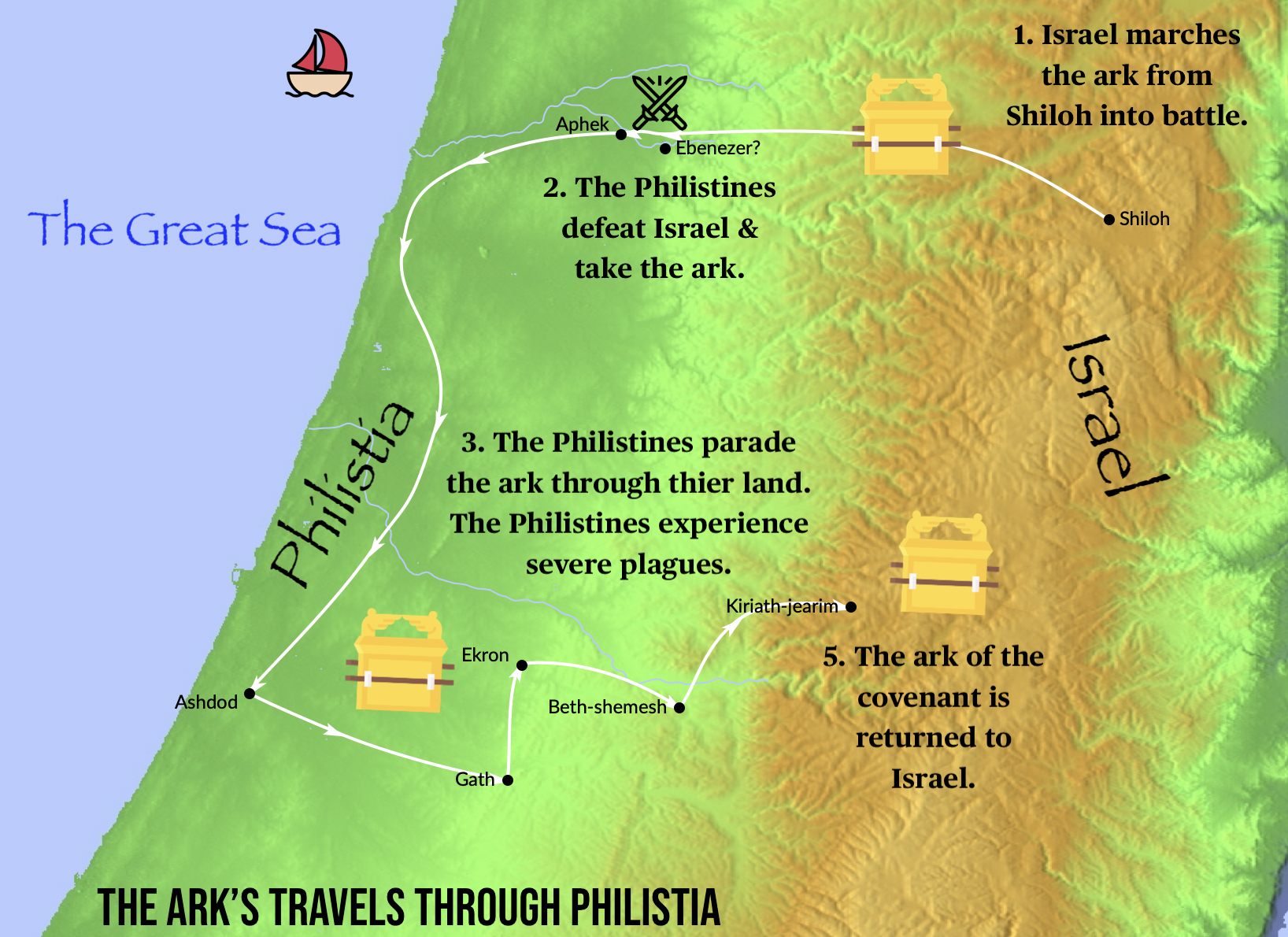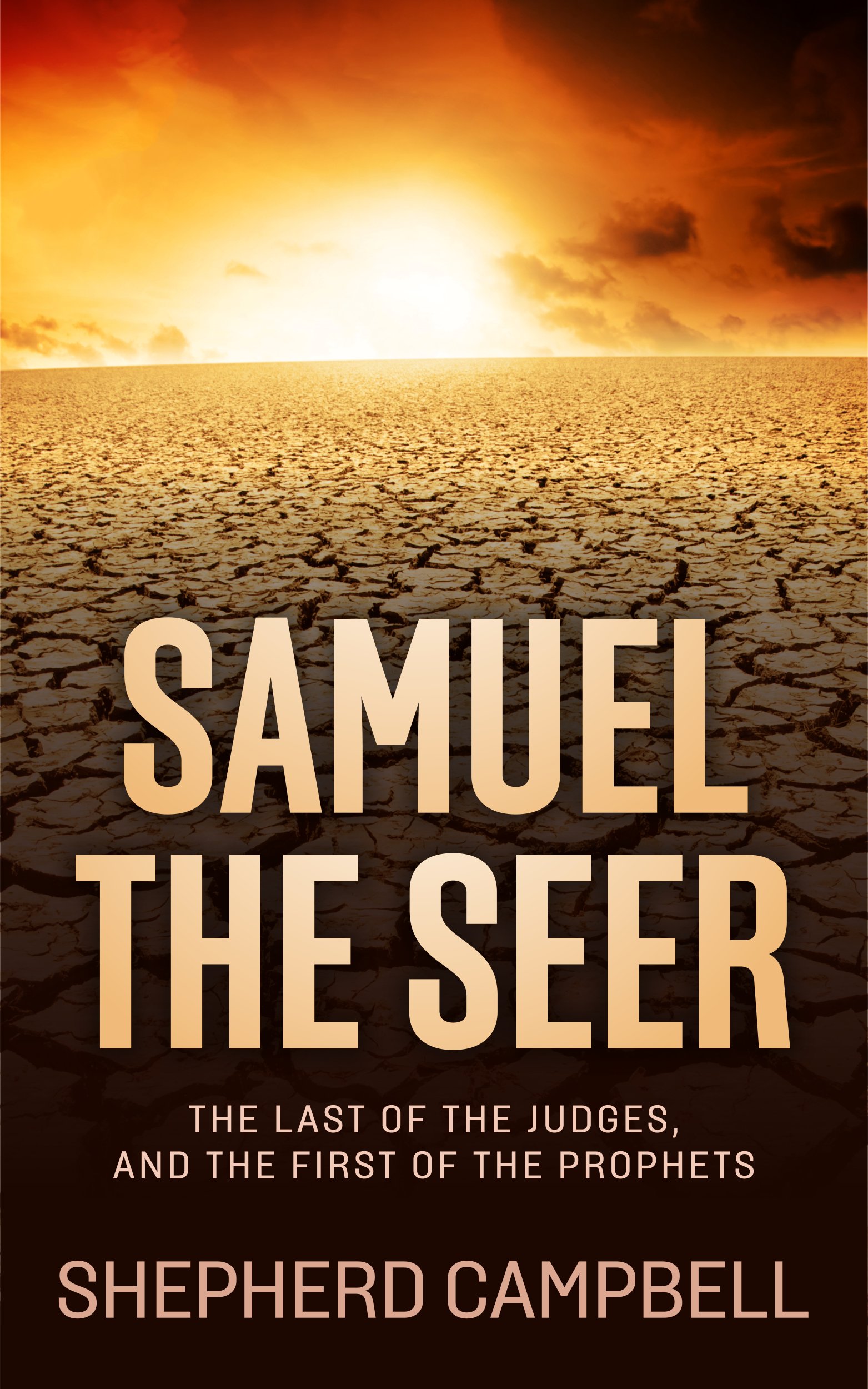VISIT OUR FACEBOOK PAGE!
The Tabernacle
The tabernacle was the beating heart of ancient Israel. Whether a tent or a temple, the tabernacle was the center of Israel's religious & civic life. It was here that Yahweh met with his people.
But what is a "tabernacle"? The word is defined as, a fixed or movable habitation, typically of light construction.
Tabernacle Word Study
מִשְׁכַּן mishkan
dwelling place, tabernacle: — dwelling(1), dwelling place(9), dwelling places(8), dwellings(6), homes(2), resting place(1), tabernacle(108), tents(3), where your glory remains(1).
A fixed or movable habitation, typically of light construction.
Tabernacle (mishkan) simply means a dwelling place, or dwelling. Dwelling means to live in or at a specified place. Thus the basic meaning of mishkan is a residence. Spiros Zodhiates states a mishkan "could be a shepherd's hut, an animals lair, or the grave."
In the NASB Old Testament the word "mishkan" occurs 158 times. Of these, 108 uses are translated as 'tabernacle', 24 as 'dwelling' or 'dwellings' and 10 times as 'places'. Over 70% of the time the word refers specifically to the temple as the dwelling place of Yahweh.
The word occurs mainly in the books of Exodus and Numbers. These two books tell the story of Moses and the Exodus out of Egypt. Thus the word tabernacle, when used in Exodus & Numbers, usually refers to the tabernacle of Moses. This was also called the Tent of Meeting. This was the dwelling place, or residence of God with Israel in the wilderness.
More on the Tabernacle
The Tabernacle of Moses: This was the first tabernacle of Yahweh constructed in the wilderness under Moses' guidance.
The Ark of the Covenant: Housed within the Holy of Holies in the Tabernacle, this was a powerful & enigmatic object which housed God's presence and was capable of routing Israel's enemies in battle by itself.
The Bible does not reference a tabernacle in the earliest narratives of Genesis. In Eden, God’s presence was direct and tangible, existing in unmediated communion with humanity. As such, a designated tabernacle was unnecessary, for the earth itself served as His dwelling, where He resided openly among creation. In essence, God Himself functioned as the sacred Tabernacle and Temple. However, humanity’s expulsion from paradise severed this intimate connection, resulting in the loss of both divine immediacy and God’s tangible presence. No longer did Yahweh stroll freely in the Garden alongside His beloved creation.
We do not know much about how God met with his people after Eden. There is only one verse that gives any hint as to God's presence with the generations immediately following Cain and Abel. In Genesis 4:26 we read;
To Seth also a son was born, and he called his name Enosh. At that time people began to call upon the name of the Lord.
In the days of Enosh people began "to call upon the name of the Lord", ie, worship the Lord. But the Bible is silent as to what this worship looked like, where it took place and how it was conducted. The brief treatment in Genesis would seem to imply worship was informal & isolated. God's presence was only with those individuals calling upon His name.
Beginning with Adam and Eve, and reaching through Jacob, God's presence was isolated to an individual family. From Adam to the Patriarchs Yahweh would appear and speak to individuals. Thus His word and presence was transmitted from generation to generation. However, that would change with the appearance of Moses.
God's presence expanded from one family to one nation. As the intimate connection with Adam had been severed, and God no longer physically resided with His creation, the tabernacle was to be His vehicle to achieve this expansion. The tabernacle was a physical reminder of God's holy presence among his people.
God's Presence
The first use of the word 'tabernacle' is in Exodus 25:9.
According to all that I am going to show you as the pattern of the tabernacle and the pattern of all its furniture, so you shall construct it.
This was the Lord's original commandment given Moses to build God a residence, or tabernacle, on earth. The tabernacle was to be a physical reminder and symbolic representation of God's continual presence among all of His people.
This first sacred dwelling was to be a portable, fully mobile structure that was easy to break down, transport to other locations, and reassemble. With Israel on the move in the wilderness this was a necessity. Thus it only made sense to utilize a tent. Hence the name, Tent of Meeting.
The tabernacle was a holy and sacred place where cleanliness and purity were of the utmost importance. God's physical presence resided within the Tabernacle, thus adherence to the purity laws was essential. Moses emphasized these points repeatedly.
Leviticus 15:31 ¶ “And so you shall keep the sons of Israel separated from their uncleanness, so that they will not die in their uncleanness by their defiling My tabernacle that is among them.”
Leviticus 26:11-12 ¶ "Moreover, I will make My dwelling among you, and My soul will not reject you. I will also walk among you and be your God, and you shall be My people."
Numbers 19:13 ¶ "Anyone who touches a dead body, the body of a person who has died, and does not purify himself, defiles the tabernacle of the LORD; and that person shall be cut off from Israel. Since the water for impurity was not sprinkled on him, he will be unclean; his uncleanness is still on him."
God gave Moses exact and precise instructions on how to build the tabernacle, what to furnish it with, how to decorate the interior, exterior, courtyard, and the daily rituals which would take place. He also gave Moses strict and detailed instructions of who is to approach it, and who is not, how they are to approach the tabernacle, and the required purity to enter its precincts. God left out no detail (Cf. Ex. 25 - 31 & 35 - 40)
Moses, to his credit, followed the Lord's instructions to the T. Exodus 40:1-3 describes the completion of the tabernacle of Moses.
"Then the Lord spoke to Moses, saying, 'On the first day of the first month you shall set up the tabernacle of the tent of meeting. And you shall place the ark of the testimony there, and you shall screen the ark with the veil."
Thus the presence of God came to dwell with Israel at Mt. Sinai. From this moment on the Israelites would be led by the presence of God through the wilderness.
“Then the cloud covered the tent of meeting, and the glory of the LORD filled the tabernacle. And Moses was not able to enter the tent of meeting because the cloud had settled on it, and the glory of the LORD filled the tabernacle. Throughout their journeys, whenever the cloud was taken up from over the tabernacle, the sons of Israel would set out; For throughout their journeys, the cloud of the LORD was on the tabernacle by day, and there was fire in it by night, in the sight of all the house of Israel.”
(Exodus 40:34-36, 38 NAS20)
For forty years they followed a cloud by day and a pillar of fire by night. If the Presence rested upon the Ark, then the Israelites stayed put, sometimes for lengthy periods of time, other times for brief moments. At Kadesh Barnea the Israelites encamped for approximately 38 years.
Numbers 10:11-12 describes the lifting of the cloud and breaking of camp in response.
"Now it came about in the second year, in the second month, on the twentieth of the month, that the cloud was lifted from over the tabernacle of the testimony, and the sons of Israel set out on their journeys from the wilderness of Sinai. Then the cloud settled down in the wilderness of Paran."
The wilderness of Paran was south of the Negev, the desert region of southern Canaan. It was located along the northern tip of the Gulf of Aqaba, which extends to the northeast from the Red Sea. As the cloud settled so did the 12 tribes of Israel. Thus the tabernacle of Moses came to rest in the wilderness of Paran. The Exodus describes a people on the move, from one wilderness to the next on their way to the Promised Land.
The tabernacle of Moses traveled with the Israelites as they wandered in & out of the wilderness. Eventually God's presence would lead Israel up the eastern banks of the Jordan River, defeating foes along the way. On the Plains of Moab Moses addressed Israel one last time prior to their entering Canaan.
The Ark of the Covenant led Israel into battle. When God approved and Israel obeyed they were victorious. No country could stand before the presence of God Almighty. The mighty Sihon and Og were two kings of the Amorites who fell victim to the Israelites on the eastern banks of the Jordan.
With the defeat of Og & Sihon the tabernacle was ready to be established in Canaan. But first Israel would have to successfully defeat the Canaanites of the region.
Moses, however, would not lead them into Canaan. The death of Moses took place on Mt. Nebo, just to the southeast of the where the Jordan River meets the Dead Sea. Thus Moses saw the Holy Land only from a distance.
Deuteronomy 34:1-5.
"Now Moses went up from he plains of Moab to Mount Nebo, to the top of Pisgah, which is opposite Jericho. And the Lord showed him all the land, Gilead as far as Dan, and all Naphtali and the land of Ephraim and Manasseh, and all the land of Judah as far as the western sea, and the Negev and the plain in the valley of Jericho, the city of palm trees, as far as Zoar."
In verse four God tells His servant Moses that he will not enter into the land, only see it from Mt. Nebo. Moses dies in verse five, "in the land of Moab". The tabernacle of Moses, also, was in the land of Moab when Moses died. What is particularly interesting about this account is the behavior of God. It seems almost cruel to not allow Moses to enter into the land God promised Israel. Moses had, rather begrudgingly, confronted Pharaoh, led the Israelites out of bondage, built the tabernacle, led them through the wilderness, and all the while remained faithful (overwhelmingly for the most part) to God.
Verse 6 records Moses' burial in extraordinary fashion.
"And He buried him in the valley in the land of Moab, opposite Beth-peor; but no man knows his burial place to this day."
The He is, of course, God Almighty Himself. God buries His servant Moses. What must this have been like? God became the servant of His friend Moses by personally burying him. Nobody would ever find the body of Moses because God wished it to be so.
Upon his death the tabernacle of Moses was poised to move into the Promised Land under the leadership of Joshua. Joshua had been Moses' assistant since he ascended Mt. Sinai at the very beginning. He had witnessed much of what Moses had accomplished. He was one of the two faithful spies who, after seeing the giant residents and cities of Canaan, reported back to trust in the Lord's promise. Joshua would lead the tabernacle of Moses with the ark of the covenant into God's Promised Land.
Joshua & the Tabernacle
Joshua 3:1 depicts Joshua and the Israelites encamped at Shittim, east of the Jordan River. Joshua has primed the Israelites for the invasion of Canaan. The invasion would cross the Jordan onto its western banks and the plains outside of Jericho. The Bible depicts Joshua and Israel setting out from Shittim and encamping on the eastern banks of the Jordan River first. The tabernacle of Moses led the way, represented by the Ark of the Covenant.
The actual tent and sacred objects were all transported with the acacia poles overlaid in gold and bronze that fit through the rings each object possessed.
The ark of the covenant led the way, representing God's presence. God would lead His people into Canaan. Joshua issued orders through his commanders to the tribes of Israel giving specific instructions regarding the tabernacle of Moses in verse 3.
"and they commanded the people, saying, 'When you see the ark of the covenant of the Lord your God with the Levitical priests carrying it, then you shall set out from your place and go after it. However, there shall be between you and it a distance of about 2,000 cubits by measure. Do not come near it, that you may know the way by which you shall go, for you have not passed this way before.
When the people were marching they carried the Ark of the Covenant. It was such a powerful object that they were required to stay 2,000 cubits behind it, or, 3,000 feet. One mile is equal to 5,280 feet, thus the Israelites stayed approximately 1/2 mile behind the Ark as they marched across the Jordan into Canaan.
As the Ark touched the Jordan its waters were stopped all the way up to the city of Adam, due north of their current position across from Jericho. As the Levites held the Ark in the middle of the river, the people passed over. Once they passed over, Scripture records they set up camp at Gilgal, just outside of Jericho, for an extended period of time. It is highly likely the tabernacle of Moses was set up in its entirety at this point. Gilgal would become the first site of the tabernacle of Moses in Canaan. The Ark would have been housed within the Holy of Holies, and the camp of the 12 tribes arranged around the tabernacle compound accordingly.
It was at Gilgal, in Joshua 5:12, that Israel observed the Passover. Immediately afterwards the manna ceased and Israel ate from the produce of the land of Canaan. The tabernacle of Moses would remain at Gilgal while Joshua and the Israelites made several incursions into Canaan. This began with the invasion of Jericho in Joshua 6. The Ark was carried around the city once a day for seven days, then returned to the Holy of Holies.
Even though the ark may travel to the frontlines, the tabernacle of Moses remained in Gilgal. Gilgal became the launch point of the Israelite southern campaign into Canaan. Initial victories at Jericho and Ai (Joshua 9:6) gave Israel a foothold in the land. Ater Joshua's dramatic victory over the five kings of the Amorites, when the sun stood still in the sky for an entire day, Scripture records (Joshua 10:15) that Joshua and all of the men returned to camp at Gilgal.
The entire southern conquest took place while the tabernacle and ark were housed at Gilgal, which was a few miles east of Jericho. In fact, Gilgal was the permanent encampment during the Conquest into Canaan. The initial invasion is recorded in Joshua 6-12. After dividing the land between the 12 tribes of Israel, Joshua 18:1 records the moving of the tabernacle of Moses.
"Then the whole congregation of the sons of Israel assembled themselves at Shiloh, and set up the tent of meeting there; and the land was subdued before them."
Shiloh was a strategic site because of its location and geography. It was located in the hill country of Canaan, which was to the immediate west of Jericho. Jericho lay in the plains, at the base of a precipitous drop from the hill country above. Shiloh was easier to defend than Gilgal, which lay open and easily accessible. This was important because, though Israel had successfully invaded Canaan, the land was far from completely conquered.
They now had enemies and needed to defend their central shrine, the ark of the covenant. Shiloh was centrally located. This became important as the tribes began to branch out. The tabernacle of Moses was central to all of Israel and needed to be fairly accessible to all of the tribes. Israel was, as Spiros Zodhiates pointed out, a "religious congregation".
The tabernacle of Moses stayed in Shiloh for quite some time. The exact length of time is unknown, as the next reference to the Ark of the Covenant changing locations is in Judges 20:27. This verse implies it had been in Bethel for an indefinite period of time leading up to verse 27.
"And the sons of the Israel inquired of the Lord (for the ark of the the covenant of God was there in those days ...)"
Thus at some point the tabernacle of Moses was moved from Shiloh to Bethel, approximately ten miles south of Shiloh along the Central Ridge Route. However, movement between the two locations seems to be frequent. Later on, in I Samuel 1:3 the Ark is depicted as being back in Shiloh.
It becomes clear as one follows the tabernacle through the pages of the Old Testament the chief object was the Ark of the Covenant. The tabernacle housed the ark of the covenant. And while the ark may be transported from the tabernacle, it was meant to reside in the Holy of Holies within the Tent of Meeting.
From the land of Moab on the death of Moses, to Shittim, the eastern banks of the Jordan, Gilgal, Shiloh & Bethel the ark moved over the hills and through the valleys of the central hill country in these early years. Scripture does not give reasons as to why the tabernacle moved between Shiloh and Bethel.
In I Samuel 4 disaster would strike Israel. The tabernacle of Moses was pitched at Shiloh when the Israelites gathered to battle the Philistines at Ebeneezer. Scripture records the Israelites brought the Ark to the battle in hopes God would provide them with victory.
Phinehas and Hophni, the two wicked sons of Eli, brought the Ark from Shiloh to the battlefield. In the following battle the Ark is captured by the Philistines, a crushing blow to the ancient Hebrews; and a scathing indictment of Eli's failure with his two sons and as leader of Israel. While the tabernacle of Moses still stood in Shiloh, the Ark of the Covenant began a journey through the land of Philistia. It would have been a painful reminder to young Samuel to gaze upon the tabernacle, empty and without God's presence. The Ark was the heart of the tabernacle and without it the tent of meeting was, simply, a tent.
God manifested His power through the Ark as it plagues the Philistine cities it visits (I Sam. 6), defiling and destroying the statue of Dagan in Dagan's temple, causing plagues of tumors and pestilence. It would seem upon the capture of the Ark and defeat at Ebeneezer that the tabernacle of Moses seems to cease to exist. Instead, it is only the Ark of the Covenant that is maintained. Though Scripture does not specifically state the tent of meeting was disassembled, the Ark alone is pictured in I Samuel 5-7.
The Ark alone is depicted in I Samuel 7 as coming to rest in the house of Abinadab in Kiriath Jearim. The Ark had been transported from Beth-shemesh, where it rested after the Philistines sent it away from their land. Scripture does not record any part of the tabernacle of Moses save the Ark. There is no mention of the tent of meeting or the sacred objects. Scripture simply states the Ark stayed in Kiriath Jearim for twenty years.
The Ark of the Covenant would remain in Kiriath Jearim until the time of David. Saul would send for it during battle (I Samuel 14:18), though there is some debate whether the translation should be Ark or Ephod in this instance. However, it remained permanently at Kiriath Jearim. Its next stop is recorded in II Samuel 6. King David is attempting to move the Ark from the city of Kiriath Jearim to his new capital of Jerusalem.
David, however, is careless in the way he transports the Ark. Thus in verse seven Uzzah reaches out to steady the Ark, touching it in the process, and is struck dead by God. Out of fear the Ark is taken to the house of Obed-edom the Gittite for three months. Finally, in II Samuel 6:17 the Ark of the Covenant is brought into Jerusalem, where it would permanently reside for the next several centuries until mysteriously disappearing from the pages of the Old Testament.
"So they brought in the ark of the Lord and set it in its place inside the tent which David had pitched for it; and David offered burnt offerings and peace offerings before the Lord."
This seems to be a far cry from the glorious tabernacle of Moses constructed in the Exodus. The fine linen and sacred objects are nowhere mentioned, and instead the Ark is simply seen dwelling in a tent. God's presence, however, made that Tent a Holy Tent. David's son would go on to construct the First Temple, mirroring the Tabernacle of Moses in its construction, though on a much grander scale and with a permanent House. Solomon's Temple was a glorious Temple, and Jerusalem became the permanent home to the Temple.
However, as the tabernacle of Moses was destroyed by the Philistines, so Solomon's Temple would be destroyed by the Babylonians. King Herod's Second Temple, the grandest of all in design and size, would also be destroyed by the Romans in 70 AD. Thus, every House of God constructed has been destroyed by man at some point. However, God is clear that it is His presence which is holy, not the building. God's presence continues to dwell with His people to this very day, despite history's best efforts otherwise.
SAMUEL the SEER
Now Available in Print & eBook on Amazon!!
POPULAR TOPICS
Learn more about these popular topics below. The Bible is full of fascinating stories, characters and mysteries!
BIBLE MAPS
Explore the land of the Old Testament! View these maps of the Bible.
